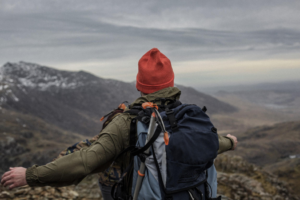With the incredible parks system in the U.S., it’s no wonder that heading to the backcountry is such a popular way to spend a vacation. But as simple and laid-back as a hiking trip is, getting ready and knowing what to pack takes a lot of preparation. Thanks to this outdoor adventure checklist, it’s easy to make sure you have everything you need.
What to Pack
The Basics
There’s some equipment that belongs in every pack, no matter what type of outing you’re on. These are the essentials; the basic things you need to stay safe in the outdoors.
Here are the 11 items you can’t afford to forget:
- Map
- Compass
- Headlamp or flashlight (with spare batteries)
- Sunscreen
- Extra clothing
- Knife
- First aid kit with personal medications
- Extra water or a water filter
- Extra food
- Lighter or matches
Day Hiking
Day trips are a great way to explore new terrain without having to carry too much weight, but packing too little could put you in a dangerous situation. Emergencies can develop quickly in the backcountry, whether it’s a storm rolling in or an injury-causing fall. Make sure you’re prepared by sticking these items in your pack:
- Day pack
- Hiking shoes or boots
- Emergency blanket or bivy
- Guidebook
- Rain jacket
- Insulated jacket and gloves (in cold weather)
- Base layer (in cold weather)
- Warm hat
- Spare socks
- Toiletries and toilet paper
- Trowel
If you’re heading up a technical route, you’ll also need some mountaineering gear. Figure out what kind of ground you’ll be traversing to determine what equipment is necessary. Here are a few things you’re likely to need:
- Climbing rope, harness, and helmet
- Belay/rappel device
- Mountaineering boots
- Crampons
- Ice axe
- Trekking poles
- Prusik slings and mechanical ascenders
- Sunglasses or glacier glasses
Backpacking
If you’re camping overnight, you’ll need a bigger backpack to fit all the gear you need for wilderness camping. Add these items to your packing list:
- Large backpack
- Waterproof pack cover
- Tent and sleeping bag or bivy
- Sleeping pad
- Bear canister or bag with nylon cord
- Backpacking stove and fuel
- Cooking pot and utensils
- Bowl, cup, and eating utensils
- Biodegradable soap
- Trash bag
- Quick-dry towel
- Food for meals and snacks
- Water treatment tablets or a water filter
How to Pack
With a packing list this long, you might feel like it’s impossible to fit everything into your backpack. And if you toss everything in haphazardly, that might be true. Organize gear the right way to maximize comfort during the miles ahead.
Balance the weight in your pack by placing heavy items toward the top of the pack and close to your spine. Lightweight items should go on the bottom, while medium-weight items fill the space around the middle and outer edges. Bulky items should be strapped to your pack’s exterior.
Make sure the items you’ll need frequently, like your map, compass, and snacks are accessible without removing your backpack, using less-convenient spots for campsite gear. Try to pack the same way every time so it’s easy to find what you need without cutting into daylight hours.
Safety Considerations
Before you hit the trail, there are a few more things you need to do to ensure your adventure is a safe one.
Leave an itinerary of your trip with a friend and another under the seat of your car. If the worst happens, search and rescue teams will know where to look for you.
Keep an eye on the weather, even if the forecast looks clear. If a storm is approaching, move away from exposed hilltops and ridges, lone trees, and waterways. Look for shelter where you can stay warm and dry until the storm passes. If you can’t find shelter and there’s lightning nearby, assume the lightning position.
Give yourself plenty of time to set up camp before night falls. Get acquainted with the area surrounding your campsite and find a spot to hang your bear bag while the sun is out.
Don’t forget safety at home: Before you leaving your house empty to go on a trip, take some precautions to protect your home from criminal activity while you’re gone. A trusted neighbor, a house sitter, and an alarm system are all good theft deterrents, but your home is most secure when you use all three.
https://unsplash.com/photos/Lh2qwkppkf8
-Jason Lewis

